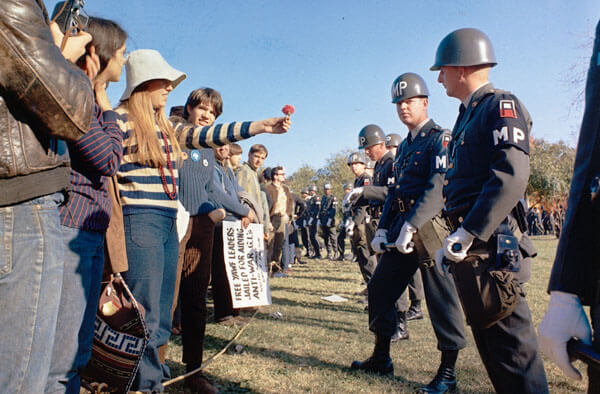
The Second World War was won, and yet the United States, as a new superpower, was about to face decades of turbulence. The world was split into two camps, each bristling with weapons, and tensions also arose among the people of the United States. Of course, a lot happened in terms of monetary history as well.
The March of Dimes
In April 1945, the American nation was mourning the loss of President Franklin D. Roosevelt, who died at the age of 63. He had aged prematurely under the pressure of four terms of office during which he led the United States through the shocks of the Great Depression and the Second World War. Thus, it was decided to honour Roosevelt on a coin.
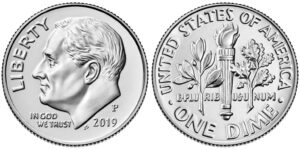
The coin of choice was the dime, which in 1938 became the epitome of the struggle against polio – against “infantile paralysis”, as it was called at the time. Roosevelt himself had been suffering from polio since the age of 39, and when a polio epidemic struck America in 1938, the president personally took the lead in the national fight against the virus. Nationwide, people were asked to send one dime each directly to the White House so the government could take action against polio.
The 1938 March of Dimes was a great success. A foundation was established, which in the following years contributed significantly to the development of a vaccination against polio.
By the end of the 1930s, the dime still had some purchasing power: For a dime, you could get a large loaf of bread or two bottles of Coca Cola.
The Cold War
As was the case after the First World War, the United States emerged stronger from the Second World War. The country had become an economic and military superpower. It was producing more than 60 percent of the world’s industrial goods and owned two thirds of the world’s gold reserves. Technological progress and the development of new consumer goods boosted the economy. And the re-armament programs during the Cold War kept the industry thriving.
The Cold War resulted from the division of the world into two ideological blocs by the victorious powers after 1945: The communist East faced the capitalist West. Neither side could risk a direct confrontation: They found themselves in a “nuclear balance of terror” – both camps were in possession of nuclear weapons. This was how the conflict escalated into the Cold War. The arms race as a threatening gesture replaced politics. And both in the East and in the West, there were campaigns to attract the countries of the Third and Fourth World. They were supposed to strengthen the respective camps.
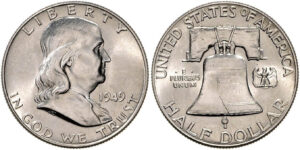
During those years, another great American appeared on coins for the first time: Benjamin Franklin (*1706, †1790), politician, publisher, writer, scientist, philosopher and founder of the American Philosophical Society. As a member of Congress, Franklin was involved in drafting the American Declaration of Independence in 1776. Thus, the Liberty Bell, the bell that rang in Philadelphia’s Independence Hall when the United States Declaration of Independence was first read in 1776, is depicted on the reverse of the Franklin Half Dollar.
The Red Menace
As far as the United States was concerned, in its fight against communism it particularly invoked the domino theory of President Dwight D. Eisenhower (1953–1961), according to which a single communist country would “contaminate” a multitude of other countries. Thus, during the Cold War, many local conflicts expanded into proxy wars between the blocs, with the Vietnam War being a typical and particularly barbaric example.
The fear of external threats was combined with a fear of ideological deterioration within the USA as well. There was a call for a review of the attitudes of state officials and the military. In 1950, under the leadership of Senator Joseph R. McCarthy (*1909, †1957), a Senate committee against “un-American activities” was established, whose activities in the USA triggered a downright hysteria. According to McCarthy, American society had already been massively corrupted by communism: Over 30,000 state employees and officers, intellectuals and artists had to stand trial before the committee. The fear of communists, stirred up during the McCarthy era, influenced American society until the collapse of the Soviet Union in 1991.
Race Riots and the Vietnam War
The 1960s in America were marked by unrest and violence. The economic boom of the post-war period was accompanied by a steady rise in living standards: Since 1950, the gross national product had increased by 77 percent. But not all sections of the population benefitted equally from the boom. Particularly coloured Americans were discriminated both economically and socially.
The implementation of social programs and the reduction of racial discrimination suffered from a foreign-policy event: The Vietnam conflict, which had been smouldering for years, escalated into war under President Johnson.
When the Japanese withdrew from Vietnam at the end of the Second World War, an independent communist government established itself there. But for a long time, Vietnam was part of the French sphere of influence in Indochina – and Paris was not willing to give up its former colony so easily: French troops returned to Vietnam in September 1945. This marked the beginning of a year-long struggle for the liberation of Vietnam, which ultimately led to the division of Vietnam: In 1956, the country was divided into a northern, communist and a southern, French hemisphere. In the course of the Cold War and its struggle against communism, the USA was heavily involved in South Vietnam from the very beginning. In 1962, the global public became aware that America had begun building “strategic villages” along the inner-Vietnamese border as bastions against communism. The USA thus became more and more deeply involved in warfare against North Vietnam. More and more soldiers and weapons had to be sent to war. Within three years, the number of American soldiers in Vietnam increased twentyfold. With the exception of nuclear weapons, all available means of war were used mercilessly.
This all occurred despite the fact that American relations with Vietnam had initially been very good after the war. The father of Vietnamese independence, Ho Chi Minh, had led the Vietnamese against the war opponent Japan in the Second World War, and quoted Thomas Jefferson in the declaration of independence from France. By the way, incidentally, this third President of the United States was also depicted on a coin.
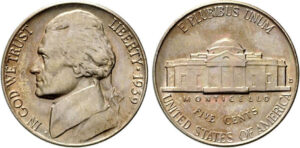
This is the 5-cent coin, better known as nickel. It is the only American coin still produced today in its original alloy – with one exception: During the years of the Second World War, the use of nickel was suspended because of its suitability for the production of weapons. Apart from those years, the nickel has consisted of the aforementioned clad, an alloy of copper and nickel, since 1866.
The gentleman on this nickel, which is still in circulation today, is Thomas Jefferson, the author of the American Declaration of Independence, the creator of the American monetary system and the third president of the United States (1801–1809). The house on the back is Monticello, the house where Jefferson died in 1826.
We Shall Overcome
The Vietnam War (1964–1973) was the longest armed conflict in American history. It ended in a military defeat and divided the nation: The rapidly growing protest movement against the “dirty war in Vietnam” plunged America into the deepest crisis since the civil war. The daily images of returning coffins of fallen soldiers – 23,000 by 1969 – undermined the confidence of the population in the government. Internationally, the USA suffered an enormous loss of prestige due to its extremely ruthless approach against the civilian population during the Vietnam War. But not only that: In November 1964, Lyndon B. Johnson (1963–1969) was elected president of the United States by an overwhelming majority. With far-reaching reform promises such as an “anti-poverty program” worth billions, Johnson had won the votes of many trade unionists, left-wing students and the Black population. But the upsurge in Vietnam quickly destroyed his promises: The Vietnam War devoured billions of dollars, leaving nothing left for social reform.
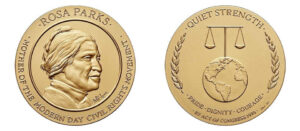
In 1964, after months of struggling in the Senate, President Johnson at least signed the Civil Rights Act to abolish racial segregation: Public services such as transportation, restaurants, cinemas, and schools were to be unrestrictedly accessible to the Black population. But the dissatisfaction in the Black ghettos was growing despite all efforts. The disappointment over the Johnson government, the pent-up anger towards poverty, police violence, racism and discrimination ventured into riots that escalated into civil war-like conflicts. In Detroit in July 1967, just like in more than 100 other cities in the U.S., days of riots took place during which more than 20 Black people were shot by the police. More than 2,000 people were injured, and entire streets were reduced to rubble and ashes.
Parallel to the civil rights movement, the anti-war movement, which was mainly driven by student bodies, also grew stronger – and that for a concrete reason: The students were threatened with being called up to Vietnam. Soon parts of the peace movement began to merge with the Black citizen movement. From this a worldwide student movement developed, which went down in history as the ‘68 movement.
The Economic Consequences of Vietnam
In the 1960s, the Bretton Woods system began to dangerously waver when the U.S. overwhelmed the world with dollars, partly as a result of development aid to Europe and Japan after the Second World War, and long-term private investments abroad. In 1964, the amount of U.S. dollars abroad exceeded the gold reserves of the U.S. Treasury. Many Americans feared the danger that these dollars could be converted into gold, thereby depleting American gold reserves.
But the dollar glut also posed problems for the other member countries of the Bretton Woods system. In order to keep the exchange rate within the prescribed range, they had to buy large amounts of dollars again and again – the German Bundesbank (Central Bank), for example, bought dollars for 112 billion marks for this purpose between 1951 and 1973. This led to significant price increases in Germany, while in the USA there was an increasing demand for gold and thus a rising gold price.
In May 1971, Germany was the first country to withdraw from the Bretton Woods system: The Bundesbank no longer kept the exchange rate between the German Mark and the Dollar artificially stable but left it to the free market. Other countries followed. As a countermeasure, the American government under President Nixon abolished the exchangeability of dollars for gold in August of the same year. Since then, the dollar has been a so-called manipulated paper currency without intrinsic value – like all other currencies of today.
You can find all parts of the series here.



